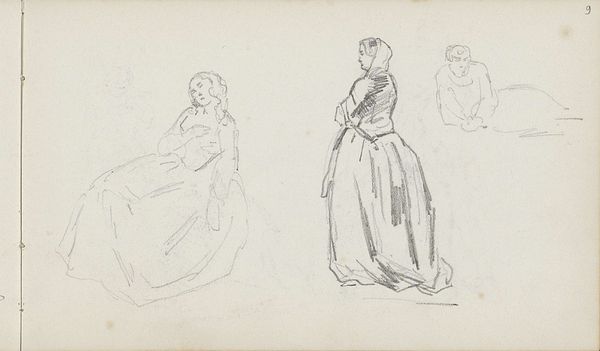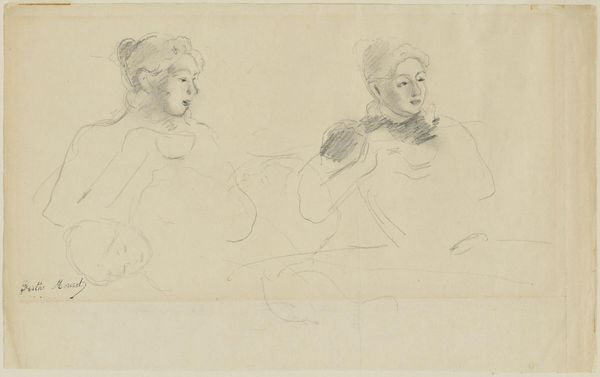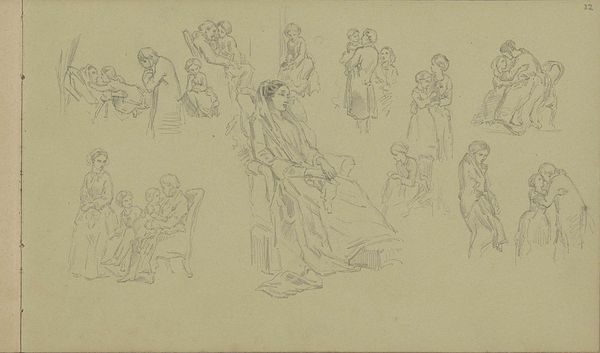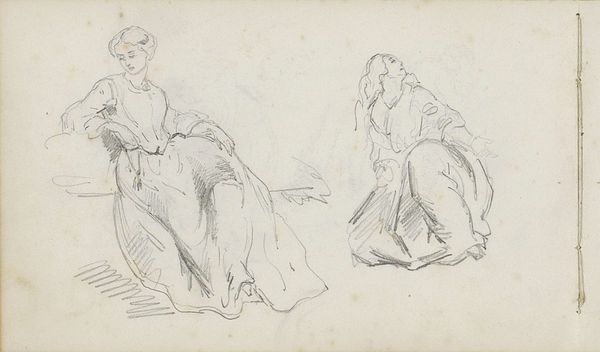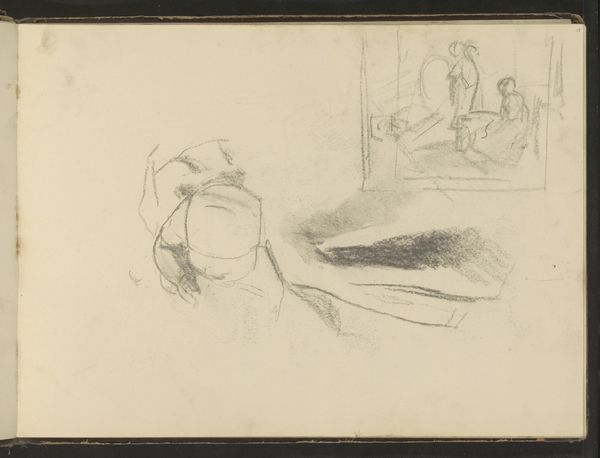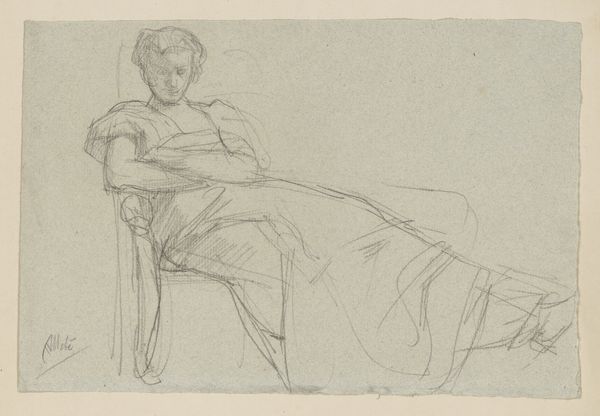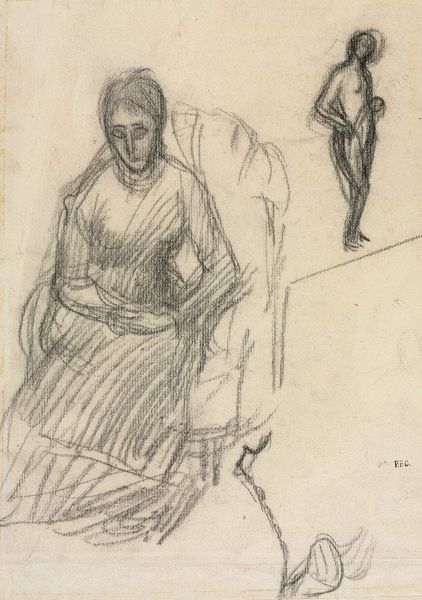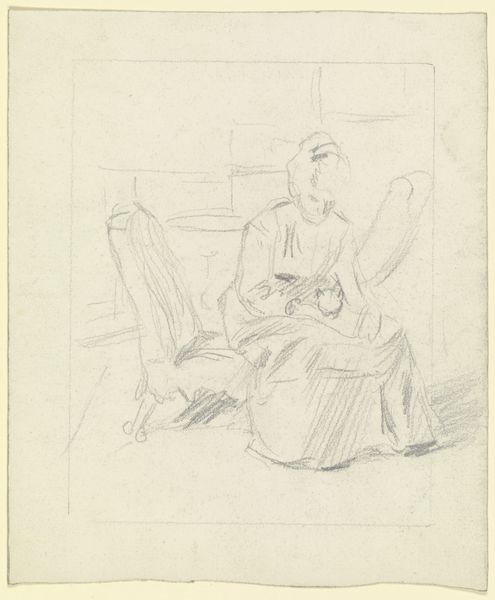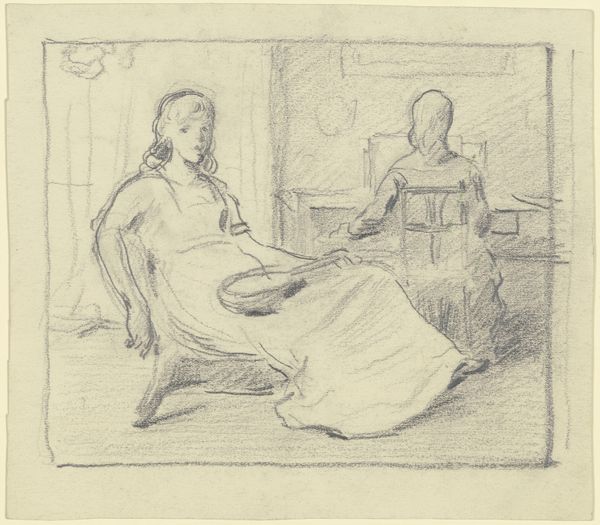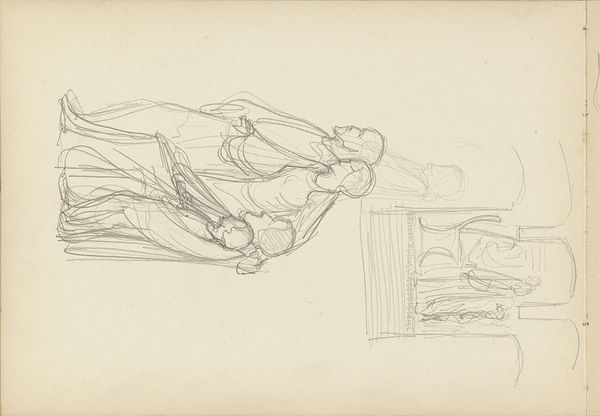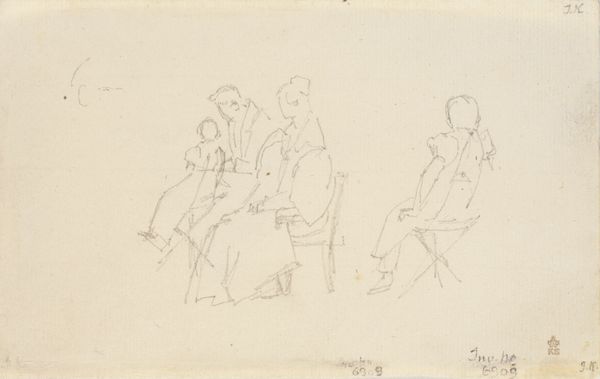
drawing, pencil
#
portrait
#
drawing
#
pencil
#
academic-art
#
realism
Dimensions: height 230 mm, width 298 mm
Copyright: Rijks Museum: Open Domain
Curator: We’re now looking at “Two Studies of a Seated Woman” by David Bles, possibly from 1876. It’s currently held here at the Rijksmuseum. Editor: My initial impression is one of fleeting melancholy. The thin pencil lines and unfinished quality create a sense of quiet transience. Curator: Precisely. The artist's deliberate use of pencil, barely sketching the figures, invites us to focus on the fundamental forms: the lines defining posture, the implied volumes of the drapery. The negative space is almost as important as the marks themselves. Editor: I see two studies of what appears to be the same woman, seated and relaxed but also, perhaps, burdened. Note the way she is leaning; to me it indicates resignation or possibly sorrow, but perhaps my perception is simply that of a somber viewer? Curator: Well, while it may evoke sadness in you, there may be other intentions by the artist. Consider the symbolic weight of her garments. It does seem a common 19th century style which indicates the image isn't merely a spontaneous study but possibly one connected with period morality, duty or loss as depicted in the symbolical attire and melancholic, almost funerary atmosphere. Editor: The face seems obscured in both studies, isn't it, leaving us to interpret her emotional state through body language. Almost as if this weren't a portrait so much as a glimpse of an archetype. Curator: Indeed, and while the perspective and anatomy aren't perfect—notice the sketchy rendering of the hands—that adds to the immediacy. It feels like we are witnessing Bles's initial exploration of the figure. Note the shading near the base that grounds the chair to the image plane. The use of negative space is of interest there too. Editor: Thinking about these women's placement: it's not entirely clear to me why Bles wanted us to confront such feelings, but the study leaves me both troubled and oddly at peace. Curator: I agree that, despite the seeming unfinished nature of it, this study provides remarkable depth to the artist's process when considering what constitutes personification. Editor: What I first saw as sadness, I now can better describe it as the kind of reflective solitude of women in portraits of the time. Thanks to you, I’m noticing that with new understanding.
Comments
No comments
Be the first to comment and join the conversation on the ultimate creative platform.
